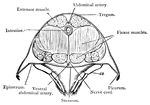Clipart tagged: ‘crayfish’

Circulatory and Respiratory System of a Crayfish
Circulatory and respiratory system of the crayfish. C-heart with three pairs of ostia; Ps, pericardium;…
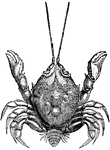
Corystes Cassivelaunus, female
"The anterior feet are about the length of the body. The other feet terminate in an elongated claw,…

Crawfish
"Crawfish, or Crayfish is a name of various crustaceous animals, the common crawfish being the river…

Crawfish
Crayfish, crawfish, or crawdads are freshwater crustaceans resembling small lobsters, to which they…
Crayfish
Longitudinal-section of a crayfish, showing digestive, circulatory, reproductive, excretory, and nervous…

Crayfish
Crayfish, crawfish, or crawdads are freshwater crustaceans resembling small lobsters, to which they…
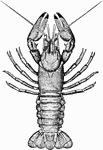
Crayfish
Crayfish, crawfish, or crawdads are freshwater crustaceans resembling small lobsters, to which they…

Crayfish
Crayfish, crawfish, or crawdads are freshwater crustaceans resembling small lobsters, to which they…
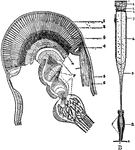
Eye of a Crayfish
A, section through the compound eye of a crayfish. Labels: 1, cornea; 2, crystaline cones; 3, retinulae;…

Nephrops Norvegicus
"Norway Lobsters have the eyes uniform and the two last rings of the thorax movable."

Pagurus Bernhardus, In the Shell
"The Hermit or Soldier Crab is perhaps the oddest and most curious of the Crustaceans." Hermit Crabs…
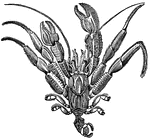
Pagurus Bernhardus, Out of the Shell
"The Hermit or Soldier Crab is perhaps the oddest and most curious of the Crustaceans." Hermit Crabs…

Prawn
A small crustacean about 3 to 4 inches in length and marketed in vast numbers. Ate throughout the world.
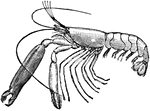
Red Shrimp
"Alpheus-A genus of macrurous decapodous crustaceans, the type of the family Alpheidæ."-Whitney,…

Spermatozoa
"Types of spermatozoa. A, from the round worm (Ascaris) with a cap, somewhat amaeboid; B, from the Crayfish,…

